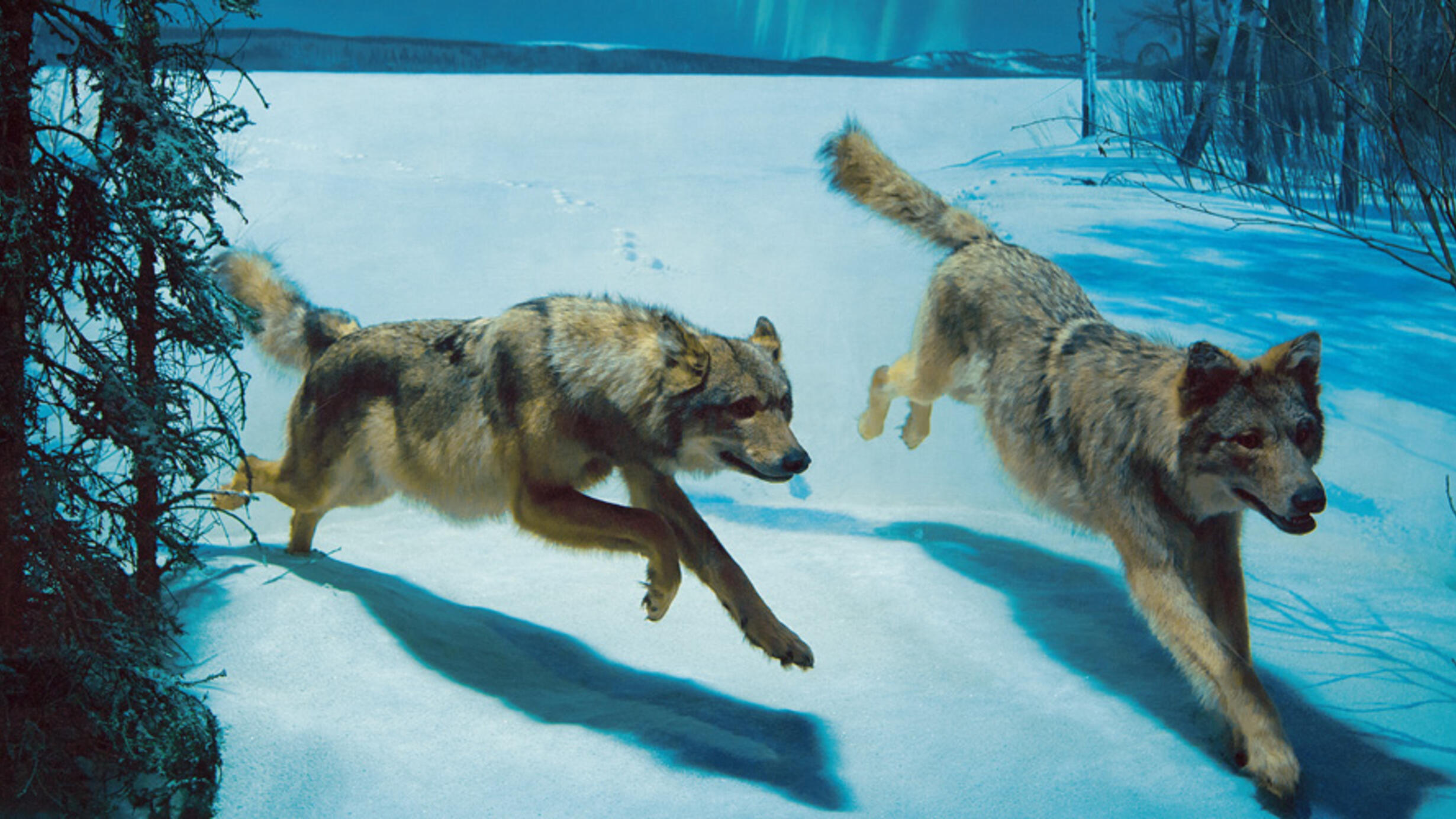Wolf
Part of Hall of North American Mammals.

December at Midnight
Gunflint Lake, Northern Minnesota
Step aside. This wolf pack is chasing a deer that is running for its life behind where you are standing. The pair may pursue the deer for several miles to exhaust it, then bring it down in a joint effort. Group hunting is how wolves can prey on animals much bigger than themselves.
Still, deer are fast, and this one had a head start—the tracks on the right show its frightened flight. If the wolves cannot close in quickly, they will give up and follow the scent of another prospect. As is common for carnivores that chase after their prey, wolf hunts fail far more often than they succeed.
The Wolf Pack
Shore of Gunflint Lake, Minnesota
Illuminated by moonglow and the shimmering Northern Lights, a pack of wolves speeds after a deer. The pack is the nucleus of wolf life. A pack can be as few as two or as many as several dozen. The leaders are usually a mating pair—the alpha male and female; the followers are chiefly their offspring.
The alpha pair dominates the family. The alpha female will snap and snarl at lesser females to prevent them from mating, for only she gets this privilege. The alpha male is the chorus-leader and decision-maker.
To ensure group hunting and pup-rearing, he will block members from leaving the pack. Still, some underlings do split off to form packs of their own—whereupon they become the competition.